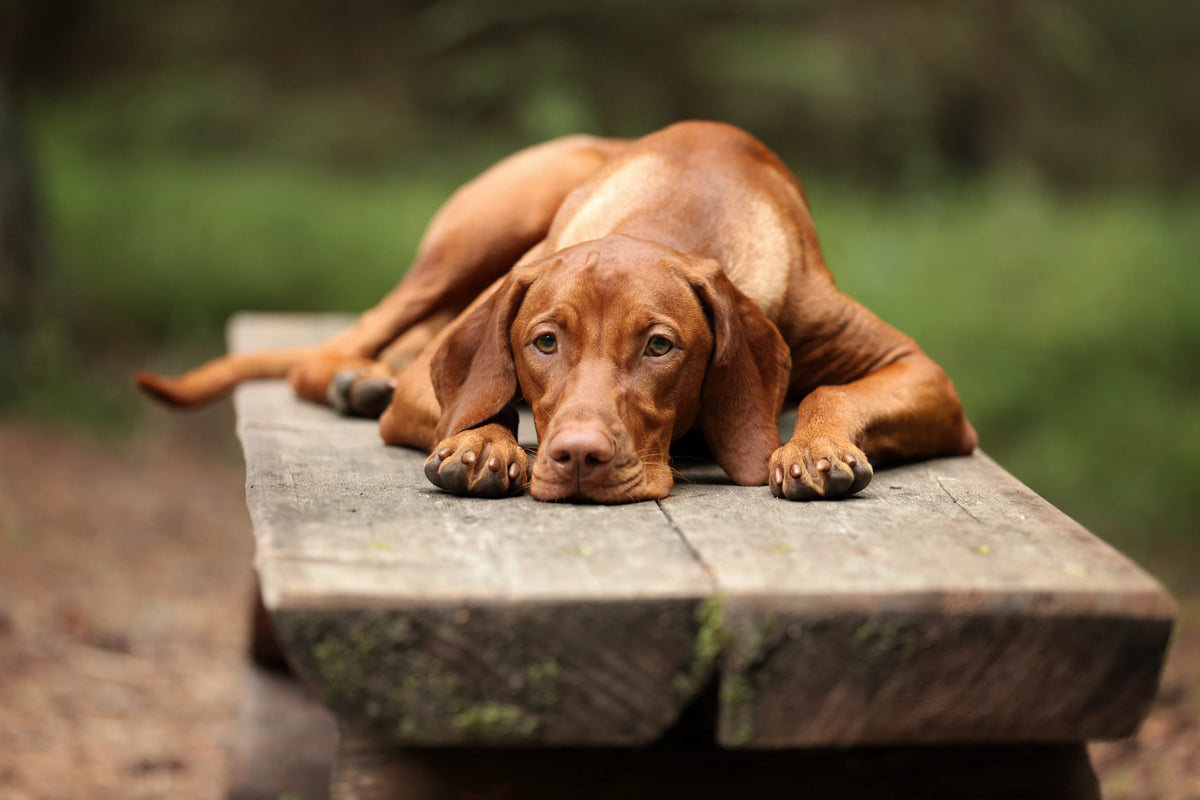
As a dog owner, there’s no doubt that you share a special bond with your furry friend. Their well-being is a top priority, and you would do anything to make life better for them. Just like humans, dogs can experience injuries and health issues that need special attention and care. One common concern is a torn ACL, a condition that significantly impacts your pup’s mobility.
Let’s take a look at the main causes of a torn ACL in dogs, symptoms to look for, and how Zen Nutrients can help aid your four-legged friend back to their normal, tail-wagging self.
An anterior cruciate ligament (ACL) tear is a common knee injury that can affect dogs the same way as it affects humans. The ACL is a fundamental ligament that stabilizes the knee joint. When it tears, it can cause pain, discomfort, and limited or uncomfortable mobility.
Several factors can contribute to a torn ACL in dogs. Some breeds are more susceptible to ACL injuries due to their anatomy, like Labrador Retrievers, Golden Retrievers, and Rottweilers. These breeds tend to have a higher risk due to their size.
Here are some common causes of a torn ACL in dogs.
Aging can weaken a dog's ligaments, making them more prone to injury.
Excess weight or obesity adds stress to the ligaments. Make sure your dog is maintaining a healthy weight.
A forceful impact or a twisted knee can lead to a torn ACL, especially if your dog is the rambunctious type.
Chronic joint issues like arthritis can weaken ligaments over time, making them more susceptible to injury.
Do you think your dog tore their ACL? If so, recognizing the signs are essential for getting your dog the help they need. Keep an eye out for the following symptoms of a torn ACL:
If your dog is limping or physically cannot touch his or her paw to the ground, then your dog could have a torn ACL. Dogs can also exhibit lameness over a few weeks or a few months.
Difficulty moving the affected leg or joint stiffness could indicate an ACL tear. If your dog declines walks or doesn’t want to get up at all, something is wrong. You should call your veterinarian right away.
If your dog avoids putting weight on the affected leg when sitting, it might be due to knee pain. Your dog might have a torn ACL if their leg sticks out rather than tucking underneath.
Unusual sounds coming from the leg during movement can point to ligament damage. You might also observe some lameness in addition to the clicking or cracking sounds when walking.
Whimpering and wailing is your dog’s way of communicating a problem. If your dog has a torn ACL, he or she may vocalize more than usual due to the discomfort caused by the injury.
If you suspect your dog has a torn ACL, it's important to seek out veterinary care. Early diagnosis and treatment can help prevent further complications and discomfort.
Your veterinarian will perform a thorough examination, including X-rays of the knee, to confirm the diagnosis and recommend the most appropriate treatment plan. Yes, this includes ACL dog surgery.
Caring for your pet after an operation takes time, patience, and a little help along the way. Here are some steps you can take to help your furry friend get back on their paws:
You want a safe space to recuperate after surgery. So does your dog. Rest is essential for healing following ACL surgery. Limit your dog’s activity, and provide them with a comfortable place to rest while they heal.
Proper nutrition aids in healing post-ACL injury, especially after anesthesia. Ensure that your dog is getting the right amount of nutrients for his or her size and weight. Keep in mind that they might not have much of an appetite. Light meals should be on the menu until their full appetite returns.
Consider adding a joint supplement to your dog's diet. Products like WoundVite for Dogs® can aid in joint health and recovery while minimizing inflammation and stress.* WoundVite for Dogs® is third-party tested, veterinarian-approved, and contains organic and bioavailable ingredients for the best recovery results.
Remember to talk to your veterinarian before making any changes to your dog’s diet.
A torn ACL is a challenging experience for both you and your dog. Luckily, Zen Nutrients makes healing a walk in the park. We’ve turned our best-selling product into a supplement formulated for your furry friend. WoundVite for Dogs® supports recovery and wound healing—plus, it even helps strengthen your dog’s joints. Give your dog the best aid in ACL recovery.
Shop WoundVite for Dogs®.
*Disclaimer: These statements have not been evaluated by the Food and Drug Administration. This product is not intended to diagnose, treat, cure, or prevent any disease.